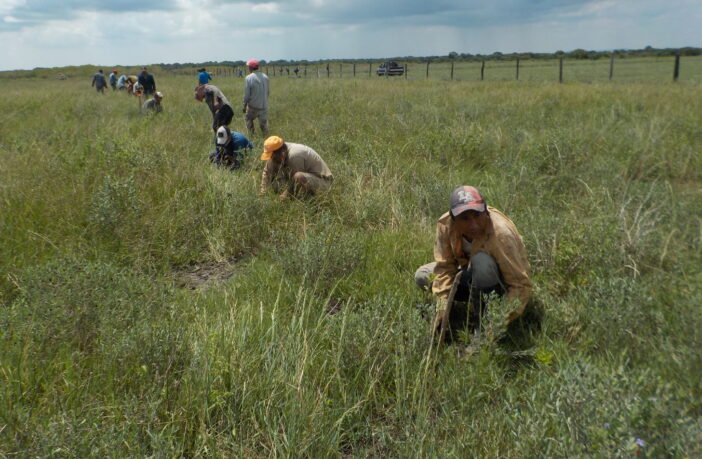How much is nature worth? Without a vibrant bio-diverse world much of what we achieve as human beings would not be possible.
Yet it has been argued that nature is undervalued. To address this we are beginning to see the emergence of Natural Capital as an asset class that values the natural world. It is an economic approach that makes it clear why a tree is worth more alive than dead.
Cultivo is a company that believes passionately in investing in nature. It operates a triple returns approach which is grounded in the view that investing in natural capital can generate healthy financial returns that are good for both nature and society.
Financial returns can come through carbon offsetting, while, at the same time species are protected and water and soil kept healthy. Cultivo believes in social returns too in the way that nature can create sustainable jobs and protect livelihoods.
For the second our weekly series of interviews with ethical investors we spoke to Dr Manuel Pinuela, CEO of Cultivo. In addition to outlining what his company’s approach is, he also speaks about the implications of the Dasgupta Review into biodiversity and economics and also the way that climate change means investment needs to be scaled up sooner rather than later.

Explain what Cultivo is and how it works? What problems are you trying to solve?
Cultivo is a new way to invest in nature at scale. We use an innovative financing mechanism to connect landowners and NGOs to investors who want to invest in nature-based solutions that will help combat the climate crisis by capturing carbon and restoring biodiversity.
The key problem we are trying to solve is the lack of funding allocated to nature-based solutions. They can provide at least 30% of the CO2 mitigation goals by 2030, yet receive only around 3% of the funding allocated to carbon capture. Our mission is to bridge this funding gap and unlock investment into natural capital opportunities that restore nature, protect livelihoods, and deliver healthy financial returns to investors.
Over the next five years, our goal is to deploy 1 billion USD in nature and restore at least 3.5 million hectares of land by financing a diverse range of projects including forests, grasslands, wetlands, and regenerative agriculture.
How do you go about finding the best ‘nature’ investments?
It is crucial to identify projects with high-quality natural capital. This is an emerging asset class that values the natural world and the benefits it provides to us.
We use satellite imagery, remote sensors and proprietary algorithms to identify projects with high-quality natural capital. This reduces transaction costs for investors and ensures we focus on the best investments for nature.
What do you think of the recent BlackRock statement that says ‘the commonly held notion that tackling climate change has to come at a net cost to society is wrong.’
They are absolutely right in that the vast majority of economic projections fail to account for the costs of physical damage from climate change, the costs and related benefits of transitioning to renewable sources and the significant impact of new policies and laws from governments which mandate more spending on green initiatives. Being ‘green’ is not only the right thing to do for the planet, it makes financial sense now, more than it ever has before.
If we want any chance at adhering to the Paris Agreement, investment strategies across the world need to adapt and start taking the climate crisis seriously. As Boivin said, “climate risk is investment risk”. Rather than investments that focus on stranded assets, we need to invest in nature itself, protect biodiversity, develop more natural carbon capture and work with local communities and landowners to make this happen. I am very pleased that Blackrock is acknowledging this now.
How do you show financial institutions how investing in natural capital can generate financial, natural and social returns – a ‘triple win’?
When a project secures investment, financial returns are generated through biodiversity offsets, carbon offsets, water offsets, and natural infrastructure (to name a few examples). Altogether, the projects typically generate biodiversity gains, new jobs, natural carbon capture and financial returns all at the same time. This reduces the overall risk as it enhances the livelihoods of local communities and boosts long term resilience.
Financial, natural, and social returns together deliver a ‘triple win’, and we’re proud that this approach is central to our business model.
Why do you think that the Dasgupta Review on the economics of diversity is so significant?
The Dasgupta Review is excellent. It has shown us, very clearly, that we need to totally rethink the relationship between economics and biodiversity. On our current course, we are set to wipe out what little is left of biodiversity in our world. This is unacceptable and would come with dire consequences for all life on the planet.
To put it into very simple terms, we can’t continue to operate in an economic system where a tree is worth more dead than it is alive. Human demands on nature need to be curbed – instead, we should invest in nature and restore our lands, rather than plunder them for resources.
The review has also shown us that there is a strong need for improving reporting on natural capital. Biodiversity is very tangible now – governments, investors and NGOs are beginning to realise this thanks to the review. Now we must use the new techniques and technology at our disposal to properly calculate this, as well as the worth of all the trees, soil, water, air, minerals, and other resources.
If The Dasgupta Review has a comparable impact to The Stern review, then this may be a turning point in our understanding of economics and how we account for the value of nature. What could this turning point look like?
The true turning point will be when investments in nature start to overtake investments that promote adverse effects to nature and communities. We’ll see investors continue to focus their investments towards land regeneration, nature-based carbon capture and biodiversity protection. We’ll also see much bolder government legislation incentivising investments in nature and penalties for projects that are carbon intensive.
Are we too late? The report says we require fast systemic change across the world. The loss of biodiversity is massive; can we actually prevent the extreme risks which the report warns about?
Not at all. We can absolutely make a difference now if we start putting our money and energy in the right places. Climate change is already happening, but we can slow it down and help mitigate what’s going to happen by reducing carbon output now, and capturing what carbon we can from now onwards. The solutions are available; it’s now up to governments, investors, financial institutions, landowners, NGOs, large and small corporates and consumers to all play their parts. Together, we can fix this crisis and to put it bluntly we don’t have another option.
What’s the long term plan for Cultivo?
Our ambition is high. Over the next five years, Cultivo’s goal will be to deploy 1 billion USD in nature and restore at least 3.5 million hectares of land by financing a diverse range of projects including forests, grasslands, wetlands, and regenerative agriculture. This is just the beginning though – beyond that time, we want to grow further and regenerate land all over the world.
We will also keep innovating. Technological solutions aimed at understanding natural capital are essential – we will make sure we are always at the forefront of this. This technology and science-based driven enables us to select the best projects from around the world and transform them into investment products known as ‘nature generators’. This provides financial institutions with a simple way to invest in projects at scale. In the months and years to come, it is very much our goal to create as many of these high quality nature generators as possible.
Through this approach, we believe an investment focus on the ‘triple win’ will become mainstream. In turn, financial institutions will see how investing in natural capital generates excellent financial, natural and social returns.




